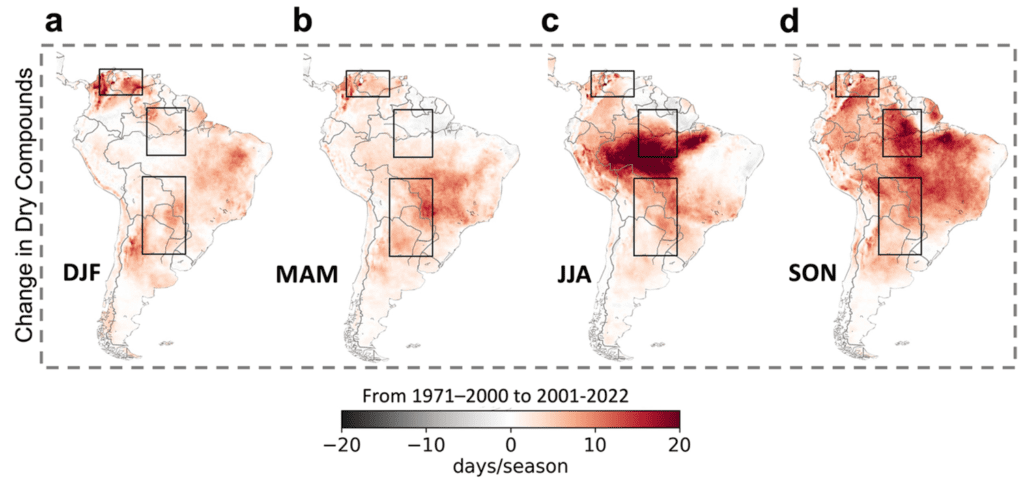Our new paper, “South America is becoming warmer, drier, and more flammable“, is published in Communications Earth & Environment (IF: 8.1).
The paper can be downloaded at https://www.nature.com/articles/s43247-024-01654-7.
Authors: Sarah Feron, Raúl R. Cordero, Alessandro Damiani, Shelley MacDonell, Jaime Pizarro, Katerina Goubanova, Raúl Valenzuela, Chenghao Wang, Lena Rester, Anne Beaulieu
Abstract: South America is experiencing severe impacts from climate change. Although the warming of the subcontinent closely follows the global path, the rise of temperatures has been more pronounced in some regions, which have also seen a parallel increment in the occurrence of droughts and weather conditions associated with enhanced fire risk. Here, we use reanalysis datasets to analyze the progression of the concurring warm, dry, and high fire risk conditions (i.e., dry compounds) since 1971. We show that the frequency of these compound extremes has surged in key South American regions including the northern Amazon, which have seen a 3-fold increase in the number of days per year with extreme fire weather conditions (including high temperatures, dryness, and low humidity). Our results also suggest that the surface temperature of the tropical Pacific Ocean modulates the interannual variability of dry compounds in South America. While El Niño enhances the fire risk in the northern Amazon, dry extremes in the Gran Chaco region appear to be more responsive to La Niña.
DOI: https://doi.org/10.1038/s43247-024-01654-7

